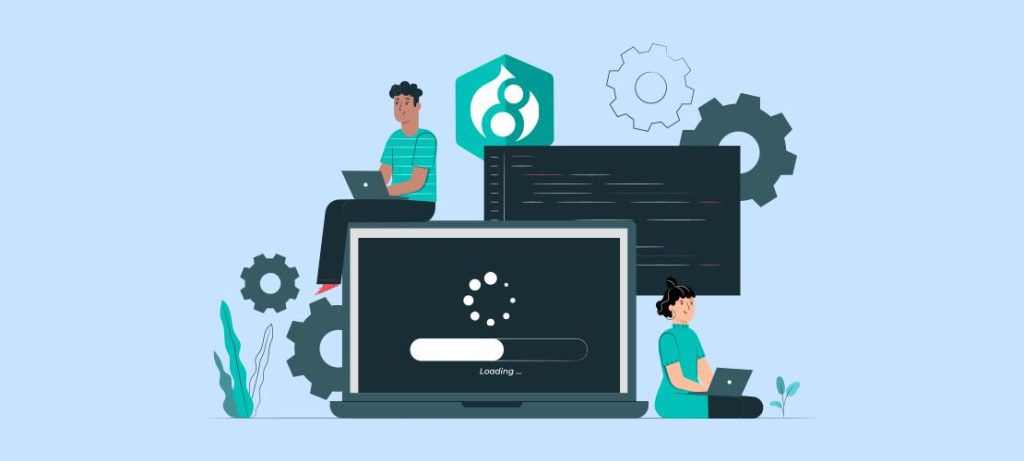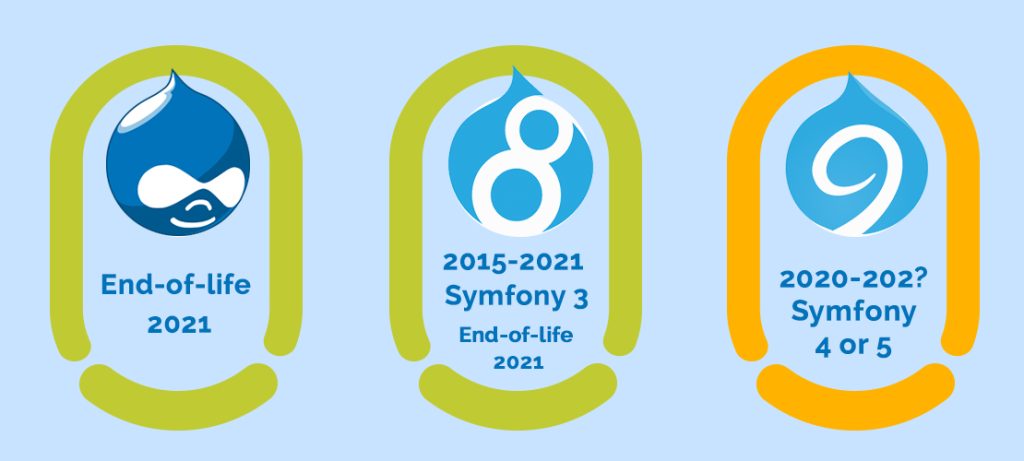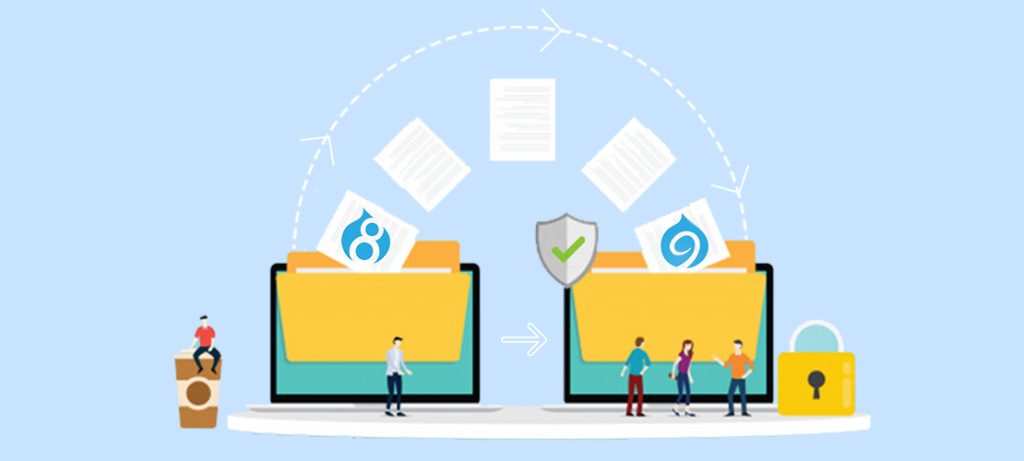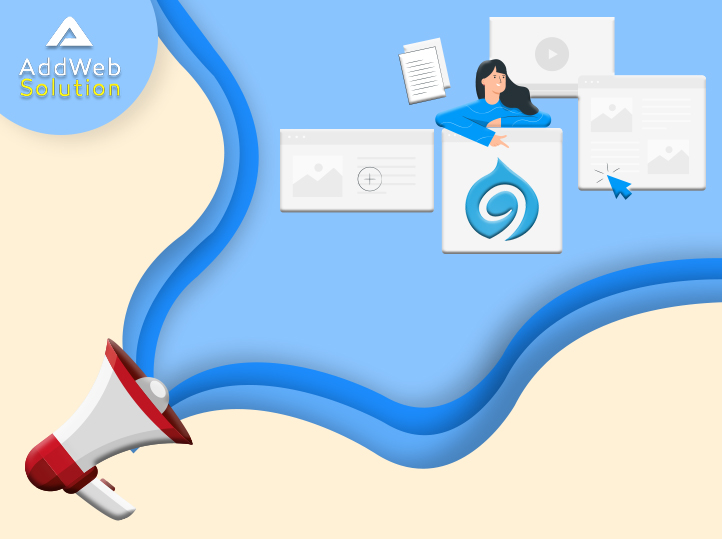Web designing is a huge exploring field these days. It’s the internet that’s building markets for most businesses, aiming at exploiting this field for the much needed revenue. For placing themselves in the digital world, most aspiring companies employ specialized web developers and designers for a quick work. Web designing is a lot like building an aircraft in the sky. It’s not just building it, it’s living a dream. A dream of both the client and the customer! Well! Drupal Development is what we will talk here!
Everywhere Drupal!
The Department of Commerce, Education and U.S. House of Representatives have also started to use Drupal. The Grammy Awards, Christina Aguilera, stars and sports of all kinds use Drupal. A Drupal site looks incredibly full of life, just the way you want it to appear. Drupal is everywhere and this undoubtedly glorifies the need to hire Drupal developers in huge numbers.
The Drupal World!
Drupal is free! That’s possible because of all the volunteers, who work for Drupal businesses, contribute for it monetarily. This is actually an amazing thing in the present world. However, Drupal sites don’t come free. In fact, the latter draws a lot of money owing to the extensibility, scalability, and awesomeness of Drupal content management system. Drupal’s Founder is Acquia, who still runs much of its products, services and support. Drupal is a misspelling of ‘drop’ in Dutch and that explains the logo.
Know It from the Core!
When we ask this question, we are basically asking about a Content Management System (CMS). In layman’s language, CMS is a software platform that aids in the management of content on a website. A CMS is a reservoir of a wide range of information assets like texts, images, databases, videos and so on. A CMS elementarily splits an entire website into three different aspects. First, is the content that goes into the site, which includes writing, editing, HTML, PHP, CSS and other related items. These are all stored in the CMS warehouse. Traditionally, HTML used to construct each page and those pages were stored in a single file, but in Drupal website, there are no pages present. Content items are the only one stored in Drupal database. The next aspect is the page design. The layout, architecture and designing of a page are separate from the content itself. The advantage here is that when you want to change the look and feel of our site, it’s just a matter of uploading or enabling a new theme. The entire site or a portion of it changes without any impact on the content. These themes doesn’t need any re-creation, instead are pulled wholly from the database. Concluding area of emphasis is technical design. Technical designing includes programming, AJAX, JavaScript etc., and this is what Drupal offers.

Hassle-Free Drupal Updates!
Drupal creates all the necessary code, to evolve the webpages, to access the content and deliver completely, with the design, while all these three areas remain separate, so, when Drupal has an update, there’s no need to worry about the content or designing part. Only the core files get updated. In case, you desire to change any design or the content of the website, you can do so conveniently without disturbing the core files as all the three are separate entities here. Drupal also creates brand new pages or notes, every time somebody loads onto the website. Earlier it was about Drupal 8 Development, and now the Sun of 2020 is bringing with it the light on Drupal 9 Development.

What’s New in Drupal 9?
Drupal turns 19 on 15th January 2020. Drupal 8 to 9 Upgrade & Migration is on the cards for many. The following features you can enjoy in Drupal 9:
- Development of Drupal 9 is being done on Drupal 8 only, and this means that there would be no extra set of code to be written for Drupal 9. The backward-compatible code, which is the new functionality, has been added with experimental features.
- Authors have a reason to smile here with Drupal 9 as there would be an embedded media library. Once it becomes functional, you do not need to add the media externally to Drupal 9 as it can be added internally.
- Drupal 8 dependent web app framework i.e. Symfony 3 would end in Nov 2021, and this means that bugs arising from Symfony 3 won’t get fixed after Nov 2021. So, Drupal 9 dependency would be either on Symfony 4 or Symfony 5.
Drupal 9 Development
- Drupal 5 was launched in 2007 and it’s pretty much done.
- Drupal 6 was launched in 2008 but 95% of Drupal sites out there are using it. That’s however a thing of the past, not the future.
- Drupal 7’s launch was seen early in the year 2011, and it is really becoming the de facto standard.
- Drupal 8 which launched in the market on 19th November 2015 is a dominant suite of tools and has a tough link to the new content supply chain. You can interact with countless applications and break free from back end restrictions without sacrificing security and accessibility. Delivery is fast with enhanced entity Caching and improved integration with CDNs and reverse proxies. Imagining and building integrated experience is possible with Drupal 8.

Drupal Staff Augmentation
Drupal staff augmentation is basically fortifying the existing workforce with qualified employees, who would work jointly, meeting changes in demand, without sharing the cost and liabilities of existing full time employees. There are several organizations, which provide scalable staff augConsultantsmentation services with the useful Drupal talent that is required. Building a team of Drupal , who would excel in terms of knowledge, expertise and velocity, is a vital requirement before upgrading the entire system to the new Drupal 9. Talent outsourcing is done on the basis of, front-end development, Back-end development, UX & UI Design, Digital Strategy, QA testing, Technical Consulting, Systems integration, Project Management and Solutions architecture.

Drupal 8 to 9 Upgrade & Migration
Drupal 9 is planned to be released in June, 2020. And thus the talk about Drupal 8 to 9 upgrade & migration! All deprecated code should be removed for easy up gradation or scalability. Codes in Drupal are marked deprecated when; they can no longer be used. Sometimes, there are better alternatives over the existing codes, so they get invalid.
It is 2020; so brace yourself, as Drupal 9 is actually coming!
Frequently Asked Questions
Drupal 9 is introduced to provide the latest features, improvements, and security updates. It’s part of Drupal’s commitment to evolving technology and user needs.
While it’s not mandatory immediately, it’s advisable. Drupal 7 and Drupal 8 will reach end-of-life, and Drupal 9 provides a smooth upgrade path with the latest features and security updates.
Directly upgrading from Drupal 7 to Drupal 9 is not supported. A two-step upgrade to Drupal 8 and then to Drupal 9 is recommended for a smoother transition.
Drupal 9 is built on Drupal 8, with deprecated code removed and third-party dependencies updated. The transition from Drupal 8 to 9 is designed to be straightforward.
Yes, Drupal 8 is supported until its end-of-life on November 2, 2021. Upgrading to Drupal 9 is recommended for ongoing support and improvements.
Ensure your modules and themes are up-to-date and compatible. Use Drupal’s Upgrade Status module to assess your site’s readiness for Drupal 9.
Many modules and themes have been updated for Drupal 9 compatibility. Check each module’s status and update accordingly or seek alternatives if necessary.
The cost depends on the complexity of your site. Drupal provides tools and documentation to facilitate the upgrade process, but seeking professional assistance may benefit complex projects.

